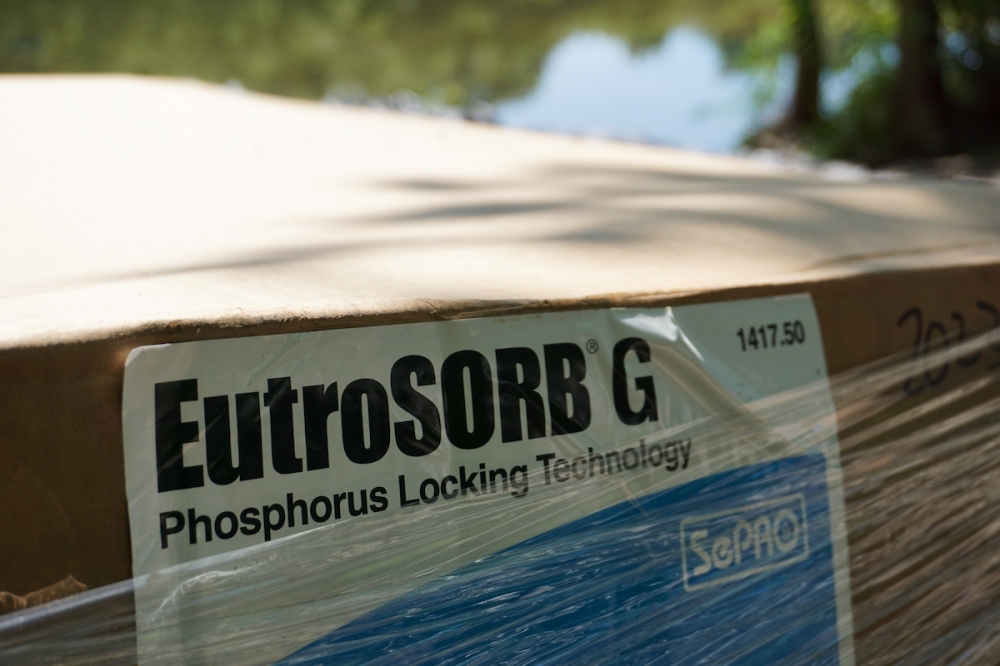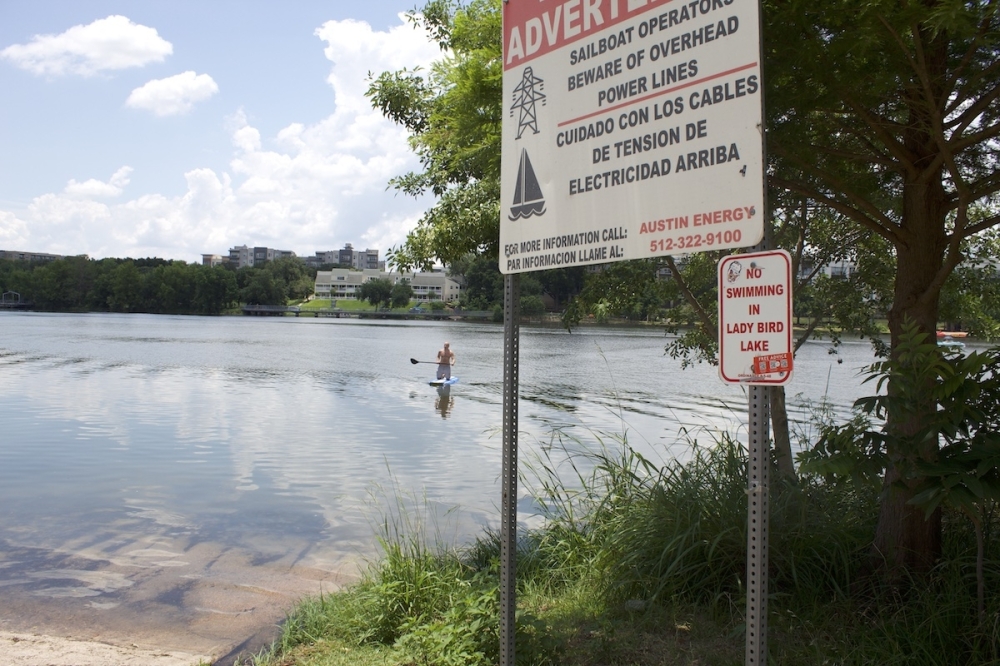To address the blooms in Lady Bird Lake, a pilot program by the watershed protection department began its third year on June 5, in which a total of 20,000 pounds of modified clay will be applied to the lake throughout the summer as a preventive measure at Red Bud Isle, and 40,000 pounds east of I-35.
EutroPHIX, a company under SePRO that works to restore and improve water quality, is applying the treatment near Red Bud Isle and the Festival Beach boat ramp.
The modified clay, called lanthanum-modified bentonite, reduces the amount of phosphorus in the lake, a key nutrient that cyanobacteria, or blue-green algae, needs to bloom, EutroPHIX National Manager Scott Shuler said.
Next week (June 5-8), we'll be treating Lady Bird Lake at Red Bud Isle & east of I-35 with lanthanum-modified bentonite. This clay material reduces the amount of phosphorus that serves as a key food source for harmful algae. (1/3) pic.twitter.com/Gj9ZL2oLFT
— Watershed Protection (@AustinWatershed) June 1, 2023
“It's a very benign substance other than its affinity for phosphorus,” Shuler said. “So there's no threat to the wildlife around as well as humans.”
This type of treatment is common for bodies of fresh water with toxic algal blooms and is becoming more commonly used for larger-scale projects, such as in Austin, Shuler said.

During initial monitoring of algal blooms this year, watershed protection officials found blue-green algae along different sites off Lady Bird Lake the week of May 2-12. On May 16, the department warned to avoid direct contact or ingestion of the algae.
Blue-green algae is present on Lady Bird Lake & Lake Austin. Please assume algae may be toxic & avoid it. (1/2) pic.twitter.com/AnLSspVunV
— Watershed Protection (@AustinWatershed) May 16, 2023
In 2019, the algae blooms in Lady Bird Lake reached a peak and caused the death of five dogs over the course of a week, Shuler said.
“Pet owners want to avoid stagnant water and floating mats of algae that they can see, because they're not going to be able to tell if it’s the harmless type or not,” Shuler said. “Avoid any kind of area that has what appears to be a scum on the surface of the water. Keep your dog on a leash and out of the water unless in a nice open area that doesn't have any floating mats.”
While not all algae in the lake is harmful, blue-green algae can contain toxins, including neurotoxins, such as anatoxin-A and saxitoxin, which can cause symptoms in people that include drowsiness, numbness and burning. Other toxins found in blue-green algae include cylindrospermopsin, which can cause vomiting, fever and diarrhea.
“What we've seen over the last two years though is when we get rid of the harmful algae mats that chara algae, which is very beneficial, has been able to really expand its growth, and that's a good thing for the ecosystem,” Shuler said.
The treatment
The treatment of Lady Bird Lake with the modified clay is being funded until 2025, for a total of $1.5 million over the five years. The project will continue for two more years and will likely expand to a larger-scale treatment based on the results, Shuler said.
“The issue here is that we're currently only spot treating because this is still a pilot project,” Shuler said. “And then secondly, because of the amount of water that flows through here on a daily and annual basis from Lake Austin, we're always going to be getting a high level of nutrients.”
The first treatment for 2023 was completed June 5, with the second and third treatments tentatively scheduled for July 10 and Aug. 14. The south shore of the lake will not be treated and instead used to monitor the effectiveness.

Lady Bird Lake meets Texas' recreational standards, and activities such as paddleboarding and kayaking are safe. Due to a city ordinance, however, swimming in Lady Bird Lake is prohibited, according to watershed protection officials.
If a person has sudden, unexplainable symptoms after contact with algae, contact a medical provider or the Texas Poison Control Center. If a pet has sudden symptoms, contact a veterinarian. Incidents of exposure are encouraged to be reported to the watershed protection department.
“We're here talking about Lady Bird Lake today, but this is a massive problem nationwide, and these harmful algal blooms are becoming much more prevalent,” Shuler said. “We need to continue to think about ways to manage our polluted waterways as well as be more proactive and think bigger about managing the watersheds as well.”
For more information on algae, visit www.austintexas.gov/algae.





